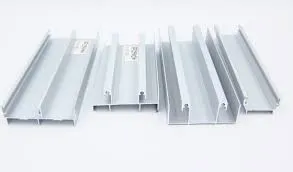Essential Components for Designing Beautiful Ornamental Iron Railings and Their Installation Tips
Understanding Ornamental Iron Railing Parts A Comprehensive Guide
Ornamental iron railings are not just functional elements; they represent artistic expressions that enhance the aesthetics of residential and commercial properties. Crafted from durable materials, these railings come with a variety of parts that contribute to their intricate designs and structural integrity. Understanding the various components of ornamental iron railings can help homeowners make informed decisions when choosing their ideal railing system.
1. Posts
Posts are the foundational elements of any railing system. Typically, these vertical supports are made from solid iron and are anchored to the ground or a base. Posts serve not only as structural supports but also as key aesthetic features. They can be adorned with decorative finials or caps, providing a customized look that enhances the overall design of the railing.
2. Rails
The horizontal rails form the primary framework of the railing system. These components connect the posts and offer support for the infill elements, such as balusters or panels. Ornamental iron rails come in various shapes and sizes, each providing a different aesthetic appeal. Some may feature intricate scrollwork or geometric designs that add to the beauty of the installation.
3. Balusters
Balusters are the vertical elements that fill the spaces between the rails. They play a crucial role in the safety and functionality of the railing, preventing falls while allowing visibility. Ornamental balusters can vary significantly in design; some may be simple and sleek, while others are elaborately designed with twists, curves, or decorative patterns. Choosing the right baluster design can make a significant difference in the overall look of the railing.
4. Infill Panels
ornamental iron railing parts

In some ornamental iron railings, infill panels may be incorporated. These panels can be made from iron or other materials, providing an additional layer of security and design complexity. Infill panels often feature beautiful designs, adding to the visual appeal while still ensuring safety.
5. Connections and Fasteners
Connections and fasteners are essential for the structural integrity of an ornamental iron railing. These parts ensure that all components remain securely attached and stable over time. Welds, screws, and brackets are commonly used to connect the various parts. When choosing a railing system, it’s important to consider the quality of these fasteners, as they can greatly affect the durability and longevity of the railing.
6. Finishes and Coatings
The finish of ornamental iron railings not only affects their appearance but also their resistance to the elements. Most railings are coated with protective finishes, such as powder coating or galvanized treatments, to prevent rust and corrosion. The choice of finish can dramatically alter the look of the railing, with options ranging from matte to glossy, and an array of colors to fit any design scheme.
7. Customization Options
One of the significant advantages of ornamental iron railings is the ability to customize various parts to suit individual preferences. Homeowners can work with designers to create unique posts, rails, balusters, and infill panels that reflect their style and the overall theme of their property. From classic Victorian designs to modern geometric patterns, the customization options are nearly limitless.
Conclusion
Ornamental iron railings are a perfect blend of form and function. By understanding the various parts that make up these systems, homeowners can appreciate the craftsmanship involved and make choices that enhance both safety and beauty. Whether you’re looking to upgrade your existing railings or install new ones, exploring the available components ensures a result that will be admired for years to come.
-
Wrought Iron Components: Timeless Elegance and Structural StrengthNewsJul.28,2025
-
Window Hardware Essentials: Rollers, Handles, and Locking SolutionsNewsJul.28,2025
-
Small Agricultural Processing Machines: Corn Threshers, Cassava Chippers, Grain Peelers & Chaff CuttersNewsJul.28,2025
-
Sliding Rollers: Smooth, Silent, and Built to LastNewsJul.28,2025
-
Cast Iron Stoves: Timeless Heating with Modern EfficiencyNewsJul.28,2025
-
Cast Iron Pipe and Fitting: Durable, Fire-Resistant Solutions for Plumbing and DrainageNewsJul.28,2025
-
 Wrought Iron Components: Timeless Elegance and Structural StrengthJul-28-2025Wrought Iron Components: Timeless Elegance and Structural Strength
Wrought Iron Components: Timeless Elegance and Structural StrengthJul-28-2025Wrought Iron Components: Timeless Elegance and Structural Strength -
 Window Hardware Essentials: Rollers, Handles, and Locking SolutionsJul-28-2025Window Hardware Essentials: Rollers, Handles, and Locking Solutions
Window Hardware Essentials: Rollers, Handles, and Locking SolutionsJul-28-2025Window Hardware Essentials: Rollers, Handles, and Locking Solutions -
 Small Agricultural Processing Machines: Corn Threshers, Cassava Chippers, Grain Peelers & Chaff CuttersJul-28-2025Small Agricultural Processing Machines: Corn Threshers, Cassava Chippers, Grain Peelers & Chaff Cutters
Small Agricultural Processing Machines: Corn Threshers, Cassava Chippers, Grain Peelers & Chaff CuttersJul-28-2025Small Agricultural Processing Machines: Corn Threshers, Cassava Chippers, Grain Peelers & Chaff Cutters












